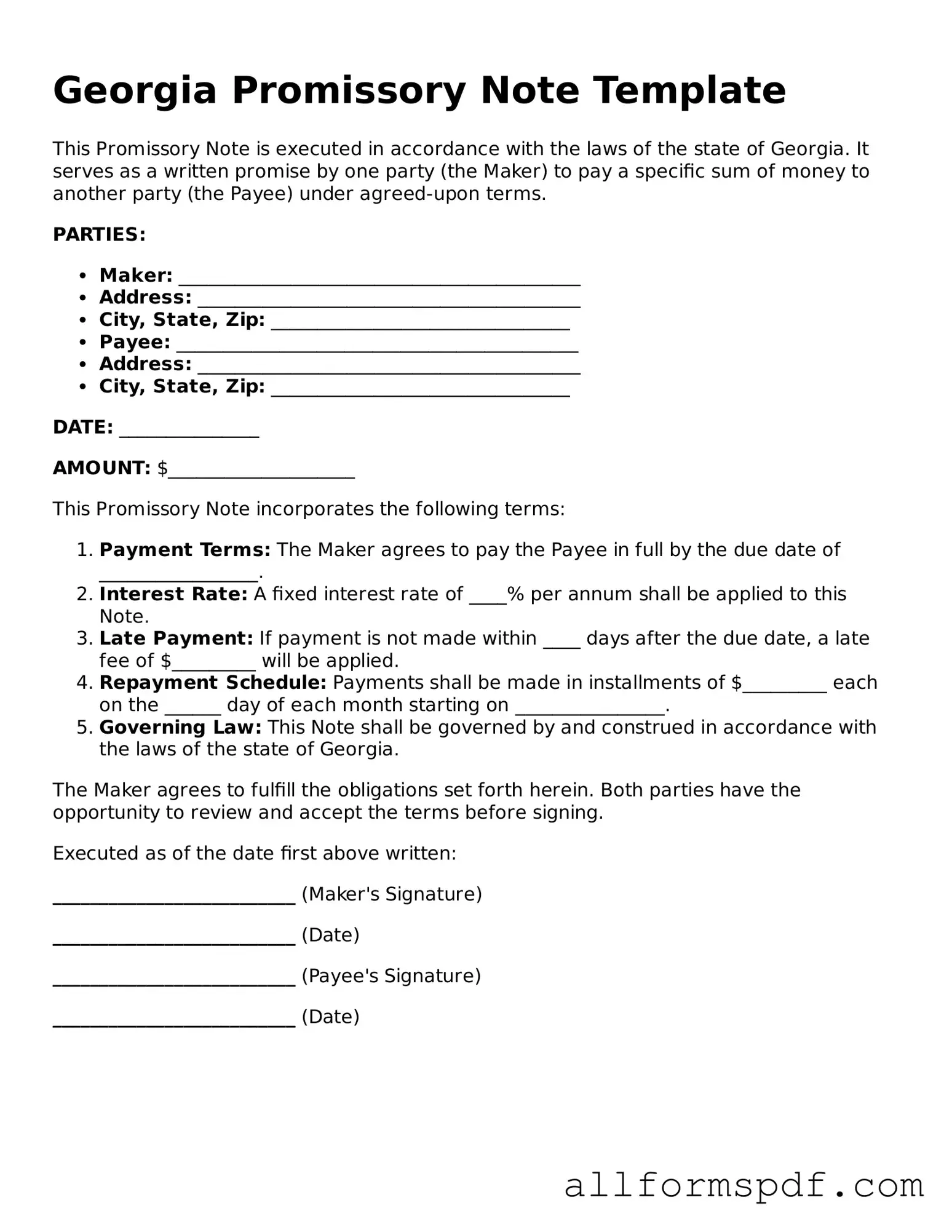Completing the Georgia Promissory Note form requires attention to detail. One common mistake is failing to include the correct names of the borrower and lender. Accurate identification is crucial, as any discrepancies can lead to legal complications. Ensure that the full legal names of both parties are clearly stated, avoiding nicknames or abbreviations.
Another frequent error is neglecting to specify the loan amount. The total amount borrowed must be clearly indicated in both numerical and written form. Omitting this detail can create confusion regarding the terms of the loan and may lead to disputes later on.
People often overlook the interest rate. It is essential to state whether the loan is interest-bearing and, if so, to specify the exact rate. Without this information, the terms of repayment may be unclear, potentially resulting in misunderstandings between the parties involved.
Additionally, many individuals forget to outline the repayment schedule. This includes the frequency of payments—whether they will be made weekly, monthly, or on another basis. Clearly defining the repayment terms helps to establish expectations and can prevent future disagreements.
Another mistake occurs when borrowers and lenders fail to include a maturity date. This date indicates when the loan must be fully repaid. Without a specified maturity date, the agreement lacks a crucial element that can lead to uncertainty regarding the loan's duration.
In some cases, individuals do not sign the document. A signature is essential for the enforceability of the note. Both parties must sign and date the form to validate the agreement, ensuring that both understand and accept the terms outlined.
Moreover, people sometimes neglect to have the document notarized. While notarization is not always mandatory, it can add an extra layer of protection. A notary public verifies the identities of the signers, which can be beneficial in the event of a dispute.
Lastly, failing to keep copies of the signed Promissory Note is a common oversight. Both parties should retain a copy for their records. This ensures that each party has access to the terms of the agreement and can refer back to it if needed.
